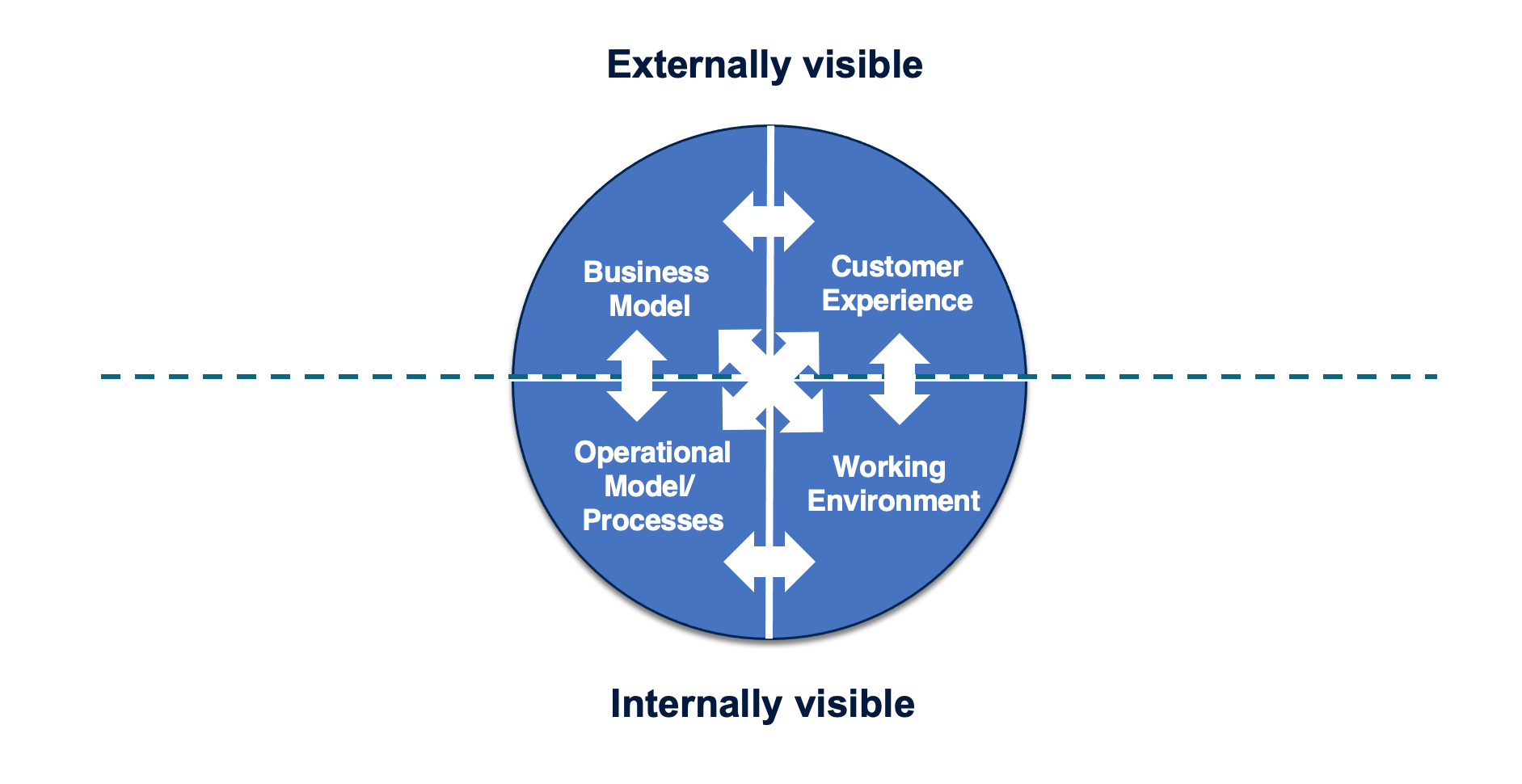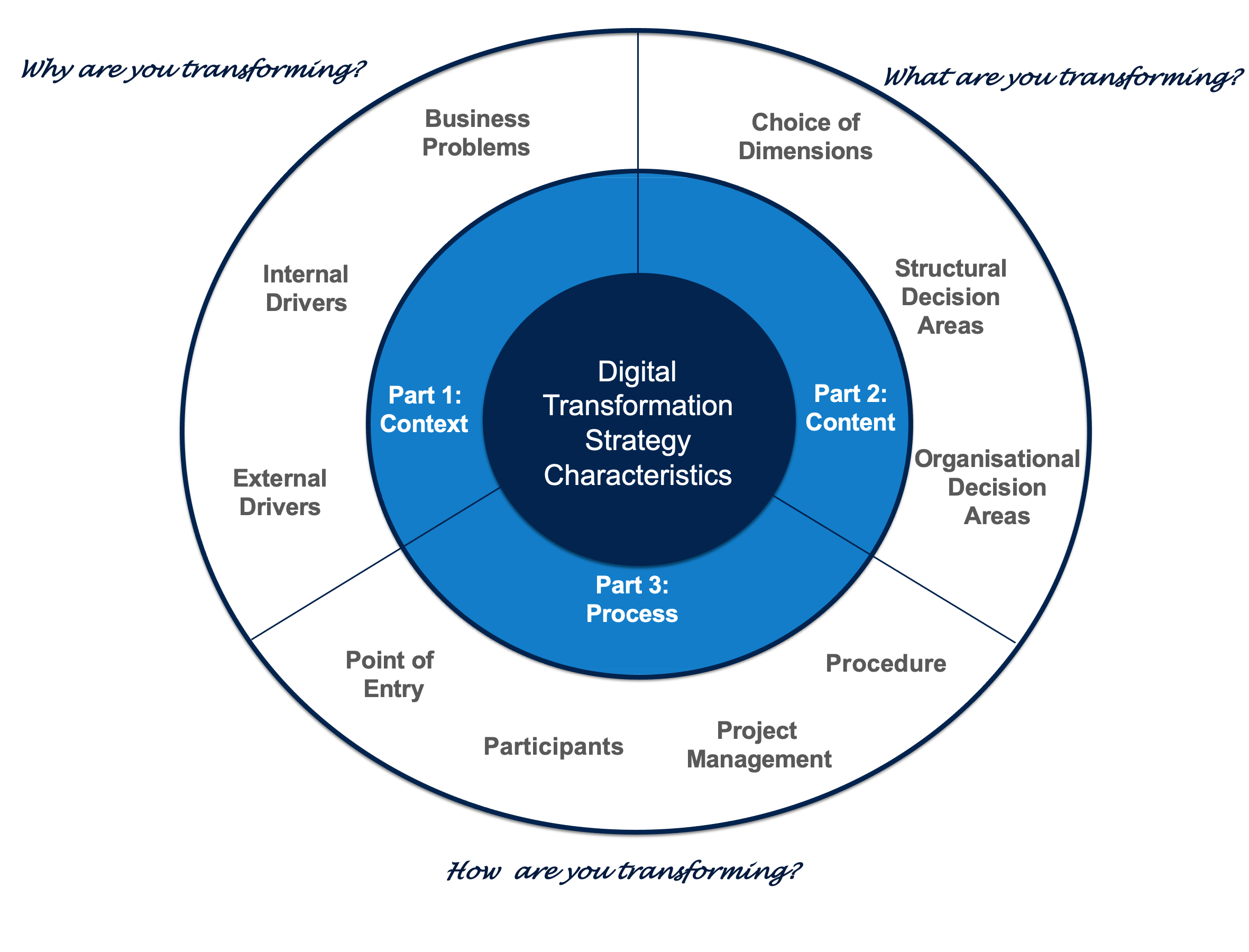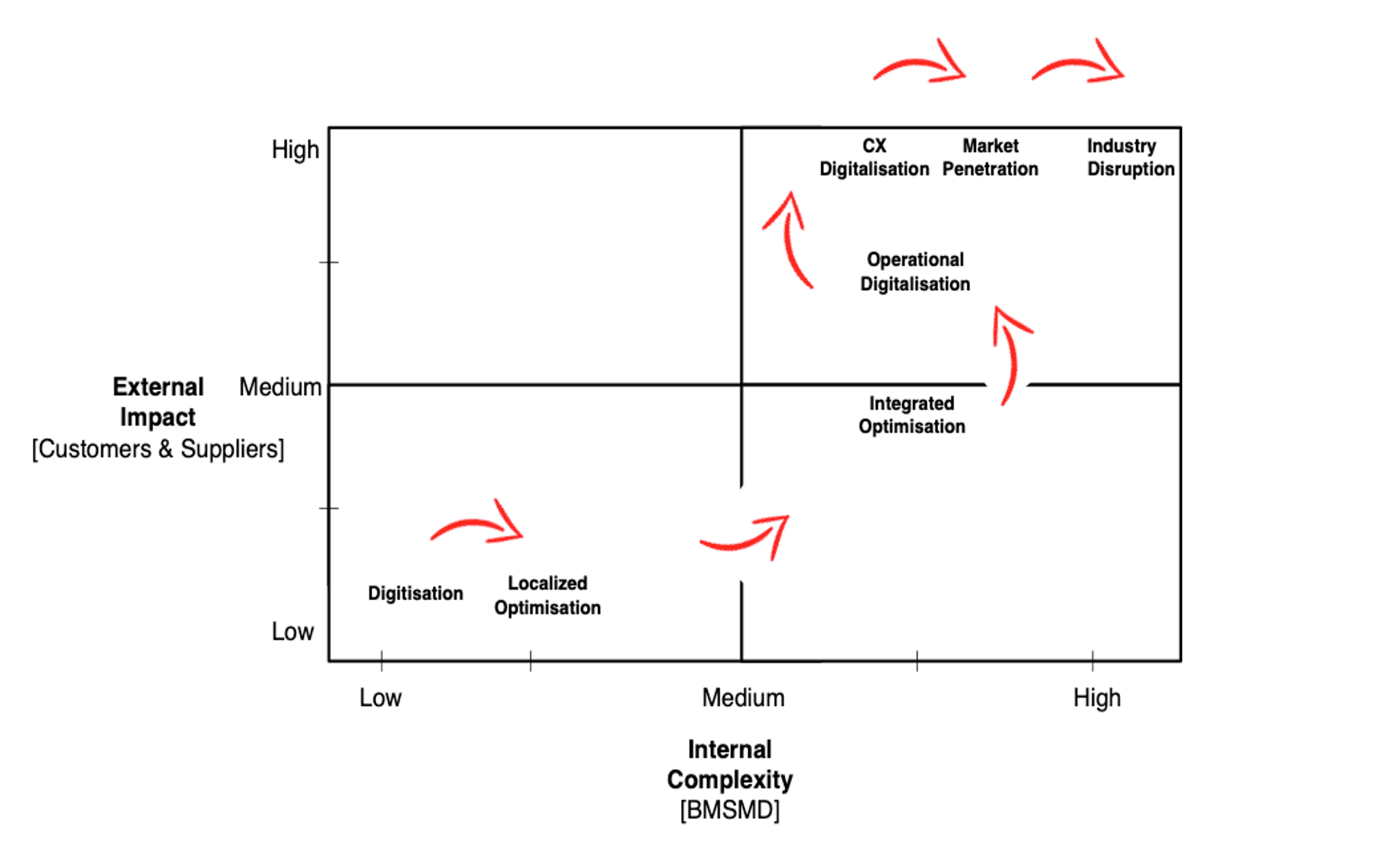Getting the most out of your digital strategy

26 January 2021
By Nicky Athanassopoulou, Head of Solution Development, IfM Education and Consultancy Services
The digital landscape can be a confusing place. Often, when thinking about how to integrate a new technology into a business, companies are unsure where to start. Do you begin by looking at what benefits a new technology can offer? Or from the business challenges where you need the most help? Does digital transformation mean changing the fundamentals of what you do?
Research at the Institute for Manufacturing into digital transformation has informed the development of tools and approaches that can help you navigate these questions successfully.
What is a digital strategy?
Strategy is how you link long-term goals to specific actions and initiatives that use your existing resources and competences as a firm.
So, a digital strategy needs to be thought of as a fundamental part of the overall business strategy that may require a firm to build new capabilities or change its business fundamentally. If done successfully, it helps firms capture the opportunities of the digital economy and use their resources to remain competitive or build their competitiveness further.
This means that a digital strategy will span across the business and affect every function: marketing, sales, operations and beyond.
How a digital strategy impacts your business
A digital strategy impacts a company along four key business dimensions: the operational model, the business model, the customer experience and the working environment.

Two of these segments are externally visible: your customer experience and your business model. Two are more internal: your operational model and processes and your working environment. So, it is important to understand what your strategy is likely to affect first, and thus how visible it is going to be in the marketplace.
It is also important to understand that technology is only an enabler. The key question remains, where can you add customer or business value? Whether directly experienced by the customer in the form of a new app, service or product, or an improvement to operational efficiency that delivers goods and services quicker and more effectively, digital options should, like other parts of the business strategy, stay firmly aligned with this.
How to start
When deciding on how to develop or establish a digital strategy, the IfM has developed a model that focuses on three fundamental questions which you should ask.

1. Why do you want to transform?
A good answer requires knowing the external factors shaping the business environment, the drivers and barriers you are facing in your industry, but also the internal drivers you need to address. What are the real pain points in your business? A digital strategy focused on addressing specific challenges will always be more successful than one that is driven by ‘fear of missing out’ on technology.
2. What are you going to transform?
This is where the four areas of impact can help to clarify your thinking. Are you focused on digitising your operations, perhaps in collecting and using more information from your supply chain? Or is this really about the brand and customer experience? Again, a specific answer will lead to a more successful strategy.
3. How are you transforming?
This is about identifying the starting point within your own company. Will this initially involve just a single unit, or specific technicians in a manufacturing process? Or does it need to be rolled out across multiple units simultaneously? How will such a process be managed? Each of these questions can seem obvious, but they can be deceptively difficult to fully answer. Armed with those answers, however, you can better plot how your digital strategy will affect your entire business, and what you need to consider when implementing it.
Navigating the digital landscape
In this chart, you can see how some of these activities can be plotted along scales of internal complexity and external impact.

Where you start your digital journey depends a lot on your appetite for risk, on your industry and on the maturity of your business. This is where start-ups can feel like they have an edge when they enter mature and well-established industries. If your business is new and already based around digital technologies, then it can be easier to obtain a competitive edge and be disruptive by offering a completely new value proposition to existing users and ignoring other elements like industry norms or established business practices. It is very hard for established businesses to do that, so they will often start in what is the lower-left corner of the chart, maybe with some digitalisation or localised optimisation. But it is important to understand not just where you are, but where your competitors are. Often, seeing other companies further along this journey towards the more disruptive end of digital transformation will spur firms into their own action – but by then, they may be well behind the curve.
Creating your blueprint
At IfM Education and Consultancy Services we use a Digital Transformation Strategy process that can help companies to develop a blueprint to see all aspects of their digital vision on a page. Our blueprints incorporate the answers to all the questions discussed in this article and can help define how the strategy affects all levels of a business, helping to explain the approach to the employees, customers, suppliers or various other stakeholders.
This article was originally published in The Manufacturer.









